
The Power of Partnership: 7 Benefits of Hiring a B2B SEO Agency
These benefits of hiring a B2B SEO agency illustrate why outsourcing your content can help you to drive new revenue for your business.
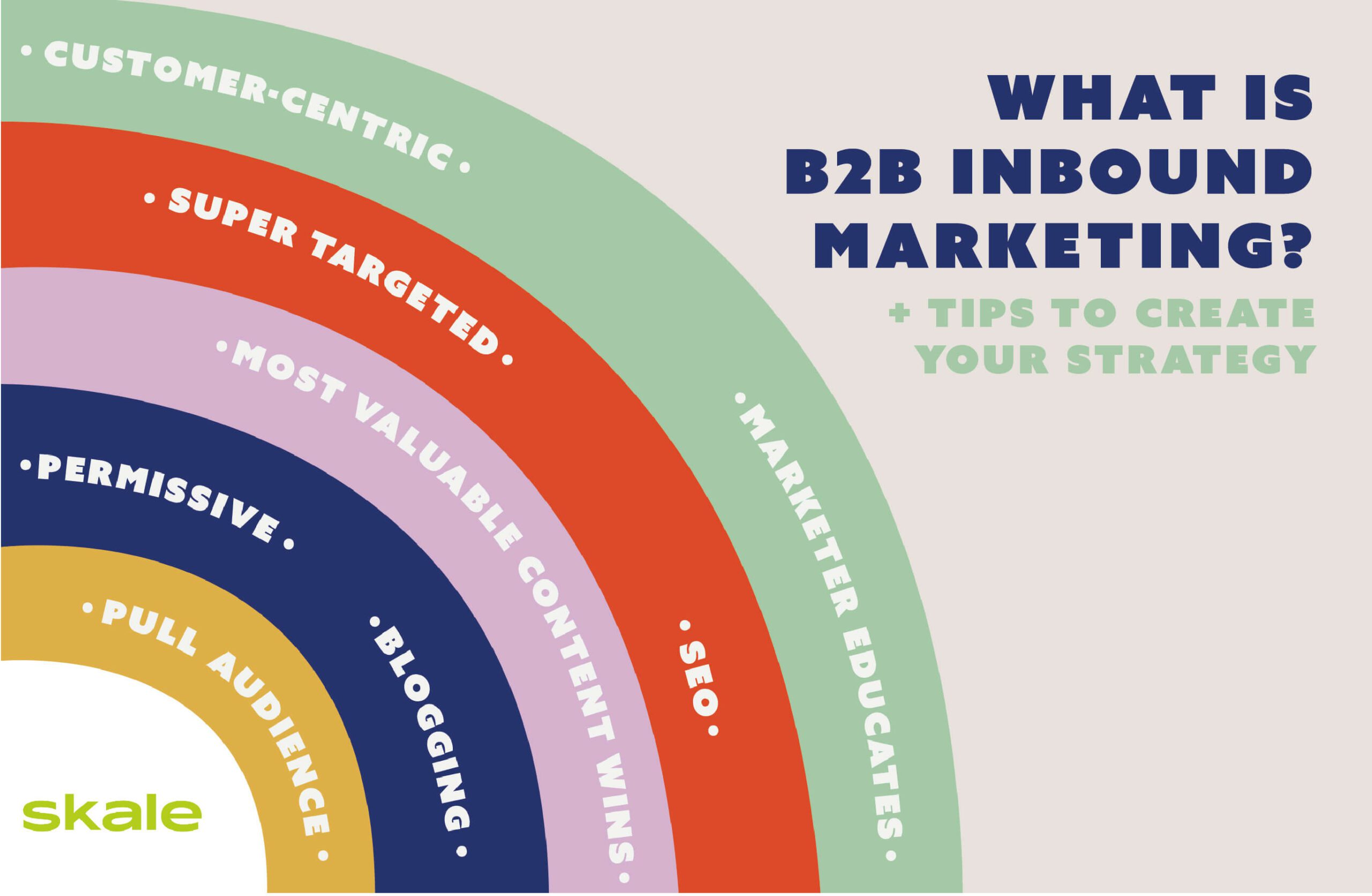
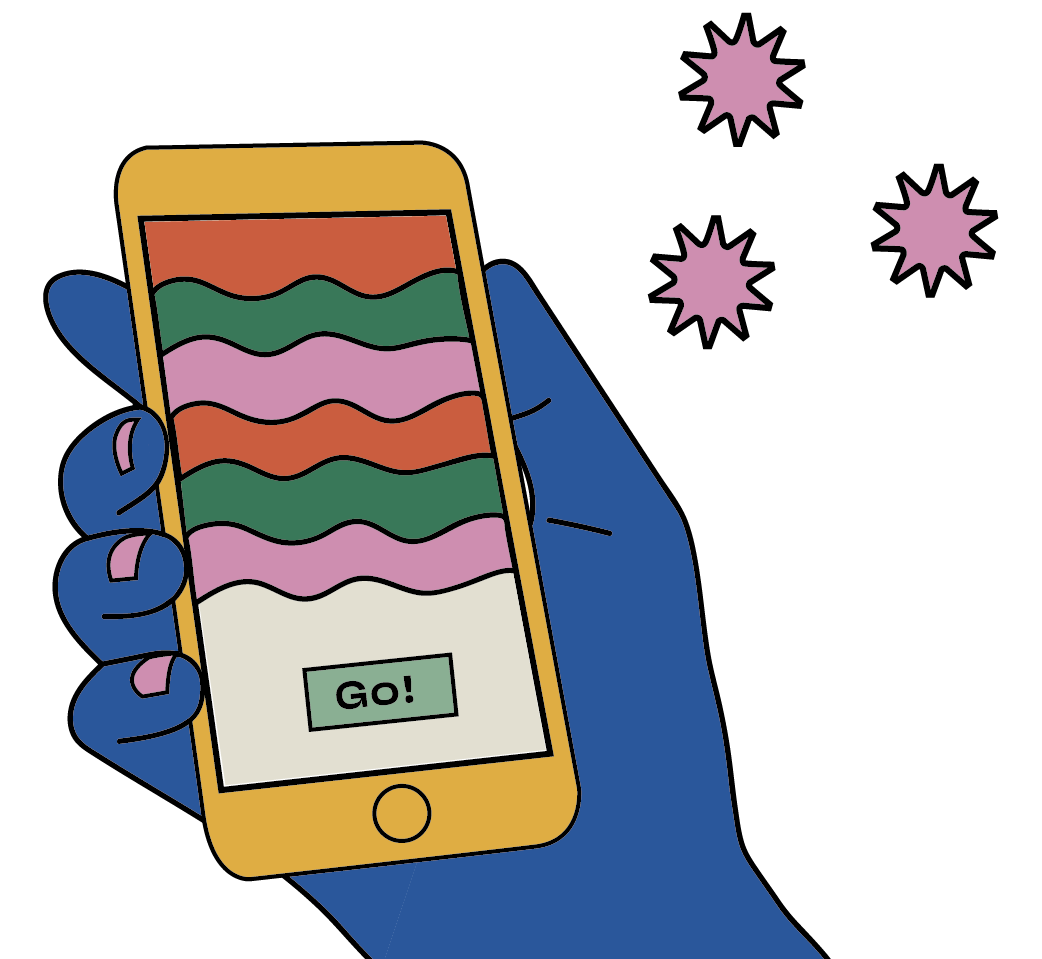
Get started with B2B marketing
See where Skale’s SEO experts can take your MRR. Get in touch today.
Schedule a callB2B inbound marketing is the process of getting users to come to you, instead of you going to them.
How is this done?
When you’re constantly providing value to your customers through insightful and knowledgeable content, you get their attention. In time, they’ll come and ask for your products.
Outbound marketing focuses more on approaching who you think is a potential customer, with a demonstration of your product or service. Outbound marketing also tends to focus more on showcasing a solution, instead of educating the customer on their pain points.
Inbound marketing is trickier to get right, but we’re here to make it easier.
Put simply, inbound marketing asks the audience to take the wheel, while outbound marketing makes the audience a passive listener or passenger in this analogy.
Think about it, when was the last time you went and bought a product that someone cold-called you about? Probably a long time ago, if ever. Instead, think of the brands you’ve discovered through their blogs and resources, and now you’re a paying customer?
In this article, we’ll go through what inbound marketing is and how to craft a perfect strategy that will make your resources attract the potential customers your sales team has always wished for.
Get comfortable because we’re heading in for a fun road trip through the B2B marketing world. Let’s go!
Inbound marketing is marketing efforts that make a customer come to your business. Every resource you create supports your inbound marketing strategy, if it makes the potential customer:
Eventually, all of this will make the avid consumer of your resources choose you as the solution they want to try out and (hopefully) become a lifelong customer of yours.
Three are three main types of inbound marketing, those are:
These types of inbound marketing work by using the following digital marketing channels and tactics to communicate with potential customers and to strengthen your brand positioning:
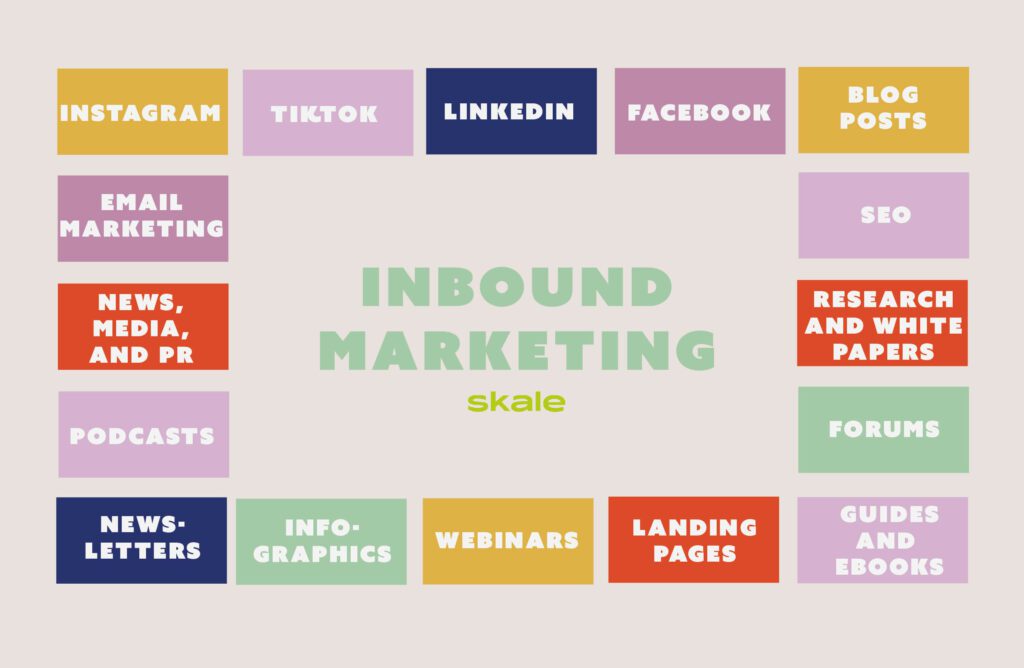
Each type of inbound marketing will focus on some of these channels and elements, but many types work in conjunction with one another.
By using inbound marketing you’re ensuring the targeted audience sees you as a trustworthy source of information, gets to know your brand, and eventually decides it’s time to talk with your sales team.
Best of all? Because they’re consuming your content, they’re acknowledging there’s a need for it–so you don’t have to convince them that they have a problem worth solving as much as you would with outbound marketing.
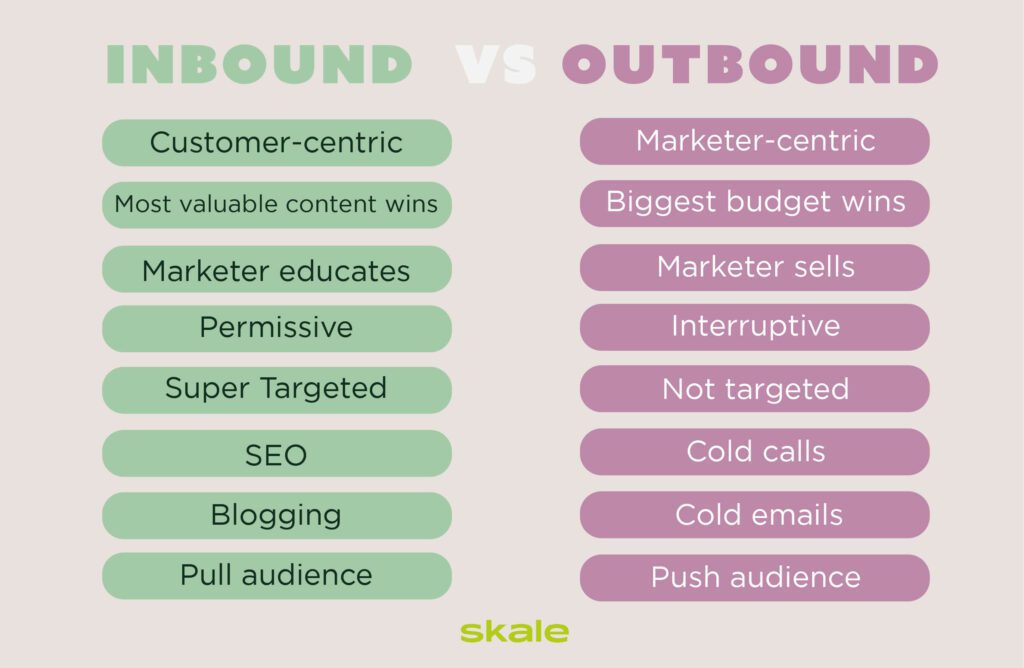
Inbound marketing brings potential customers to you, while outbound marketing sees you reaching out to find potential customers.
Inbound marketing strategies work like a magnet attracting your customers through high-quality content.
Outbound marketing is like a massive speaker, shouting about your products to people that may or may not be interested.
Each has a place in the buyer’s journey and largely depends on your industry. However, when it comes to the business to business industry (B2B), people prefer inbound marketing. In fact, businesses that apply inbound marketing strategies see 126% more leads than those that only use outbound marketing.
Why?
In the B2B world your target audience won’t just click ‘buy’ on the ad you show them. They have to:
See why your audience might not want to blindly follow some ads shouting at them that you’re the best at what you do? B2B sales cycles last on average up to four months, that’s the time it takes to win their trust, build up your brand awareness and position yourself as a thought leader.
In the B2B world, content marketing is the king–or queen–of the B2B marketing-activities castle. Content is the main player that will get your users talking about your business.
Let’s explore what you need to do to create the inbound marketing strategy of your dreams! Yes, marketers have these kinds of dreams. 😎
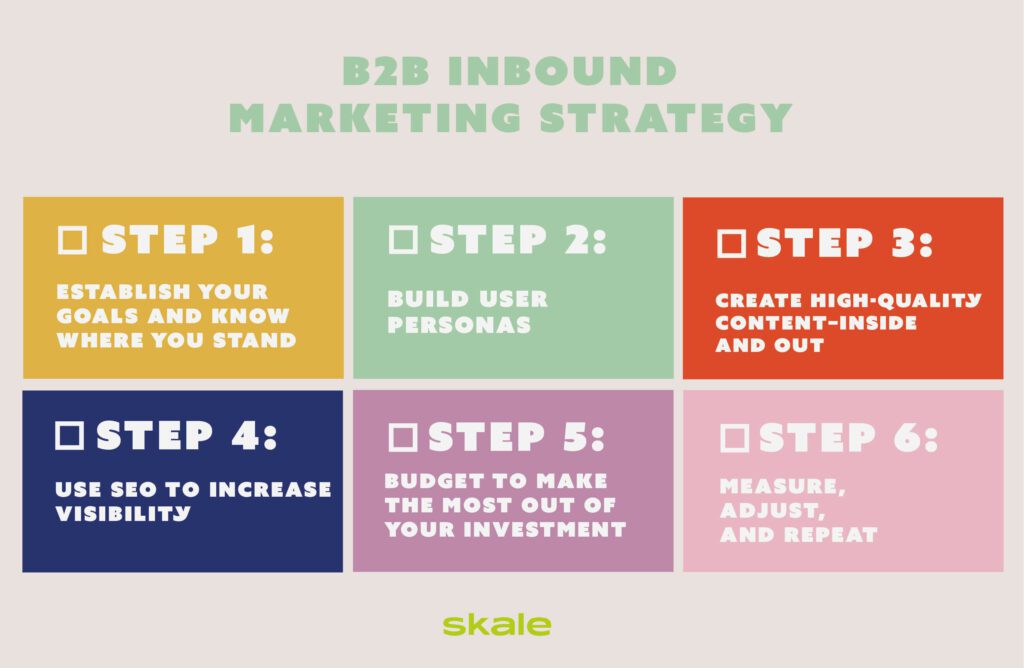
There are a few steps to follow if you want to create an inbound marketing strategy that’s specially designed for B2B.
Let’s look at what each of these steps are:
Just like a hiker wouldn’t start without a compass, your strategy can’t start without establishing your directional goals.
You need to know exactly what you want your inbound marketing campaign to accomplish. For example, it might be to increase MQLs, increase organic traffic, increase domain authority, drive higher quality leads, or something else.
In terms of B2B-specific goals, you’ll want to be thinking about key performance indicators (KPIs), S.M.A.R.T. goals (specific, measurable, achievable, relevant, and time-bound), ROI and conversions.
Once you know what you want to accomplish, you’ll need to measure where you’re currently at, and understand where your competition is, which you can do using B2B marketing benchmarks.
Knowing the starting point and the desired finish line will help you see where you need to make improvements and reverse engineer how to get there.
Additionally, this will not only help you map your strategy, but it will tell you more or less how long it will take to get to your goals. Checking historical data and knowing how long it takes to see ‘X’ amount of improvement on ‘Y’ are, will help you see the wider picture and benchmark progress.
User personas are the archetypal, fictional construct of your ideal customers. Their behaviors, backgrounds, and characteristics are mapped out so you can fictionally understand how future customers will act with your product or brand, including business traits, demographic information, and knowledge gaps
Why do we need them? Building your user personas will help you understand who your target buyers are and what they might be needing or looking for–what their search intent is!
Buyer personas can be created through research, surveys, and interviews. This information will be essential to know what type of content buyers are looking for and which channels you’ll find them on. It’s advisable to give your target user persona humanizing features—like a name, location, gender, or image—in order to help your marketing team visualize them as a real person rather than a data point.
Keywords, for example, are essentially words and phrases which are commonly used by your target buyer persona. There will likely be different personas for different offers, in which case you might have multiple target buying personas.
Content is key. If you’re not solving the questions that your users have, or you’re saying what everyone else is saying, chances are potential customers won’t see you as a thought leader.
There are multiple ways and channels to achieve this. B2B content goes beyond classic blog posts, spanning videos, podcasts, newsletters, webinars, and gated content.
Whatever the medium, don’t be afraid to ‘spill the beans.‘ The more honest and willing you are to provide real value to your visitors and users. the more they’ll trust you and the more willing they’ll be to check out your product or service.
For example, Jake wrote a SaaS SEO guide with an Actionable Guide to Building a Growth-Driven Strategy. He didn’t hold back in this article and is sharing a ton of industry secrets most agencies probably wouldn’t want to let go of—yet, here we are, letting go and hoping people thank us for it!
High-quality content doesn’t just mean that it’s valuable and insightful, it also means that it is presented beautifully and provides a fantastic UX experience–up to 88% of consumers are less likely to return to a site with bad UX.
There are millions of apps out there (think Piktochart, for example) that will help you add high-quality and professional images, presentations, and infographics to your content.
Seize these types of tools to make your users want to read or consume your content because they are finding it easy on the eyes, and informative.
Search engine optimization (SEO) is taking into account–and improving–all the parameters and elements that make your content discoverable and rankable by search engines. There are multiple ways to do this, with some of the top options being:
Paying attention to your technical SEO–we’ve got a technical SEO guide just for you–means you’re making sure your content is being taken into account by search engine crawlers.
Additionally, you ensure that you’re giving it a chance with a quick load speed–a site that loads in 1 second has a conversion rate 3x higher than a site that loads in 5 seconds–being indexed properly. You’re also making it readable wherever your audience is–consumers spend 3.8 trillion hours on mobile devices!
Not too convinced about the importance of SEO? Check these stats:
Another thing that’s super important in an SEO strategy for inbound marketing is back-linking. Back-linking is when one website links to another website, signaling its trustworthiness and expertise.
Link-building is not easy, but with the right tried and tested link-building tactics for B2B SaaS brands you can outrank your competition.
SEO can make or break your effort, which means doing it alone can be harder than it needs to be. If you’re looking for help from SEO experts that focus on SaaS and B2B don’t hesitate to check Skale, a B2B SEO Agency that’s proven time and time again to be one of the best ones out there.

See some of Skale’s biggest SEO wins
Read SEO success stories to see what Skale can do for your SaaS
Read our Success StoriesHaving a winning marketing strategy can be relatively easy. However, having a winning strategy that fits your marketing budget can be tricky.
In B2B marketing, you’ll have to consider the costs of the following channels:
Once again, by understanding your goals, you’ll be able to know where more of your budget should go, and where it shouldn’t.
B2B marketing differs from B2C marketing:
Additionally, return on investment is not always easy to calculate in B2B marketing.This is due to the fact that since the sales cycle is longer and you rely more on inbound marketing, it’s not always as easy to say ‘they clicked on this blog and so they became customers.‘
In reality, a lot of the effort of inbound marketing will take weeks, even months, to show results and as such is harder to measure compared to B2C.
Now, we’d like to mention PPC (Pay-Per-Click) marketing. It’s a type of internet marketing where advertisers pay a small fee every time one of their ads is clicked. It’s a way of buying visits to your site, while also driving organic site visits.
There are multiple benefits to PPC:
Once you have your winning inbound marketing strategy that fits your goals, and your budget, you’ll want to measure it constantly.
Marketing is not rigid. It will change with new trends, customers, and new insights. The best thing you can do is to constantly look at the main metrics that will indicate what needs to be changed–and change it quickly.
Here are 11 crucial SaaS marketing metrics you should be considering:
Once you measure and adjust, you’ll repeat this process for as long as you want your marketing campaign to run. Psst! It should be evergreen!
Following these steps will ensure that you’ve covered every base needed to create an effective B2B inbound marketing strategy. All there is now to do is execute the plan, and keep going.
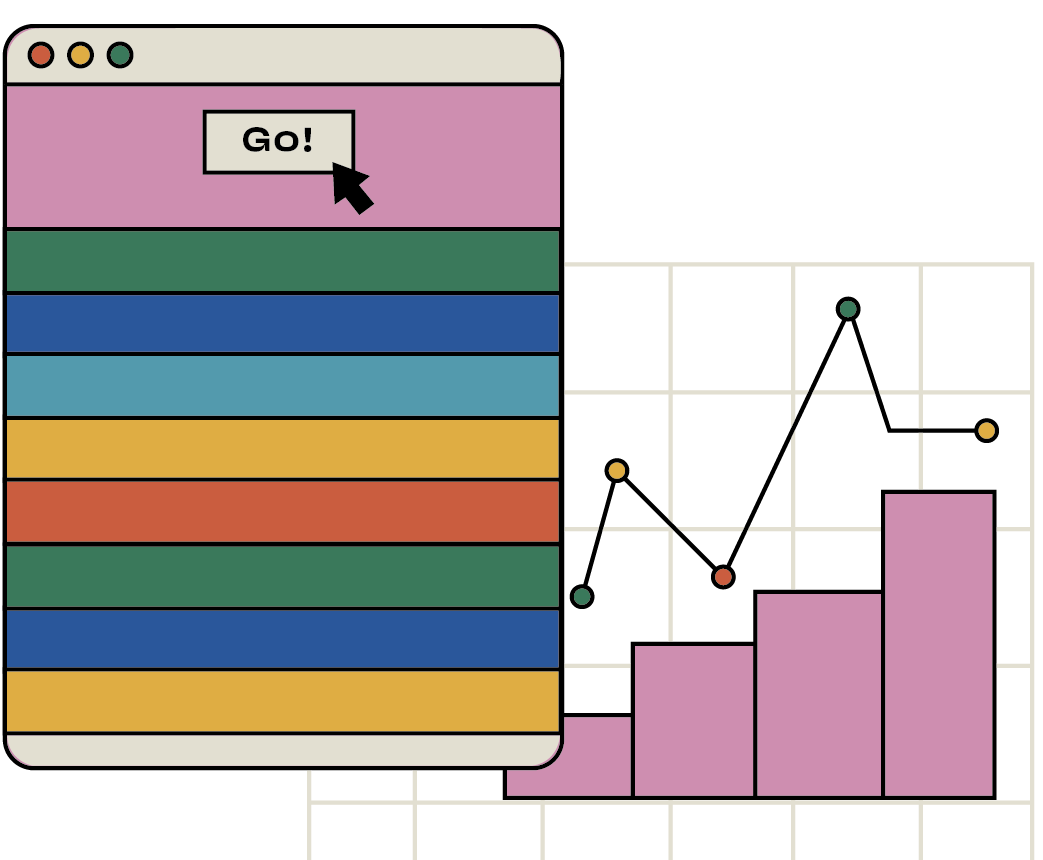
Effectively measure your SEO ROI today
Download your free ROI tracker and better support your B2B SEO strategy
Download the ROI TrackerB2B inbound marketing is important because it’s what’s going to attract the right leads to you.
It doesn’t only attract new, potential customers, but it keeps your readers and current users happy, which can turn them into ambassadors for your brand and increase CLTV and other essential metrics.
This accepted idea that instead of the typical sales funnel, where strangers enter at the top, become prospects and then customers, is now being challenged by the marketing flywheel.
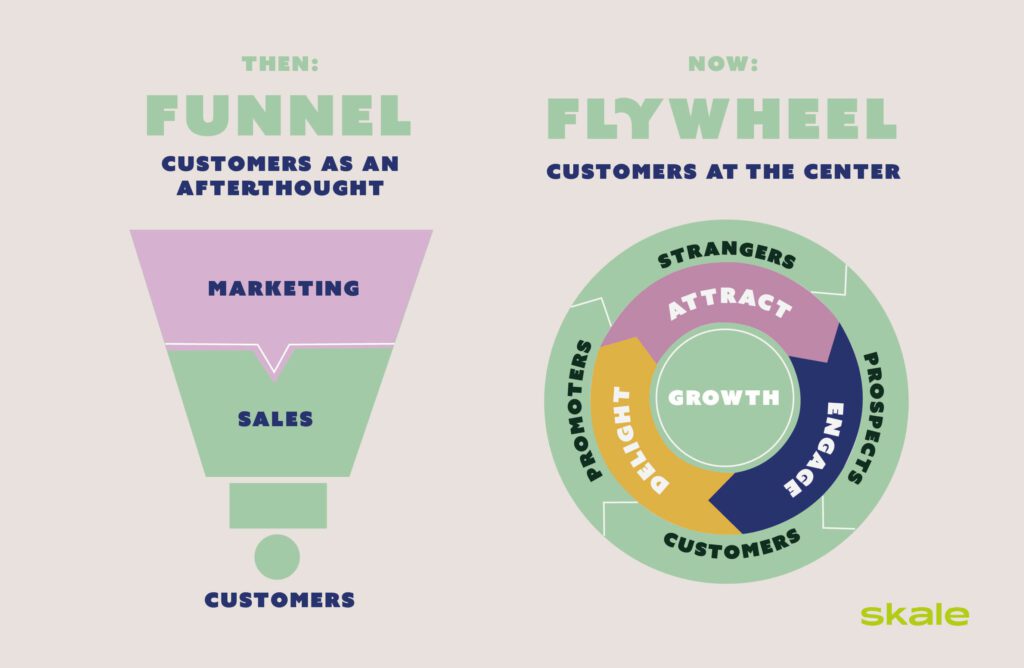
In the sales funnel, the marketing team focuses on bringing in new leads, and the sales team focuses on converting them from leads into customers. In the funnel, there are four stages:
Now, on the other side we have the colorful wheel. In this wheel the stages start, but they never really stop. In the funnel, it would be hard to consider getting the customer once again. In the flywheel, it’s a cycle and customers or first time users are inside and don’t leave, they also encourage new customers to enter—turning your B2B SaaS into a product-led growth machine.
The stages in the marketing flywheel are as follows:
As you can see, the main difference between these two models is that the funnel focuses on attracting new customers, while the flywheel focuses on keeping these customers—which also, in turn, brings new customers.
B2B inbound marketing is not only for the first stages of acquiring new customers but it will also help you keep them happier for longer—increasing CLTV and ARPA. This is essential in B2B, a marked difference from B2C where one purchase is often all that’s needed from the customer, and no repeat business is sought after.
Now that you know how to craft your own strategy, and you know why it’s important, let’s look at some tips for you to make the most out of your B2B inbound marketing.
Once you’ve created your strategy, you can’t just go for a margarita and look longingly at sunsets for the rest of your days. Getting the B2B inbound marketing strategy is only half of the equation.
From now on, you’ll need to continue on this life-long process of constantly improving and checking your content to make sure you’re delivering great value every time. It’s a process, and it won’t happen overnight.
SEO is constantly evolving. As people’s interests change and search engines become smarter the algorithms will keep updating and modifying and you need to be on top of it. Understand what Google is doing, but also all the other search engines–yes, YouTube counts as a search engine.
A few years ago people would have said that virtual reality is just a thing for video games. However, now that the metaverse is quickly becoming a reality and might become our second home, you need to be aware of the constant changes going on around you.
Ask yourself important questions, such as:
Ride out that innovation wave and give your team time to be innovative. Perhaps there’s a bandwagon to be built, rather than just hopping on the back of another one.
Maybe you think TikTok is only for Gen-Z influencers and cute cat videos. Maybe you think Instagram is only for selling but not really for educating. Maybe you think Twitter is only for political fights.
If you do think like this, you’re running the risk of missing out on potentially huge digital real estate. Maybe your stakeholders are hanging out on Instagram or Twitter for finding new blogs, newsletters, or webinars. Maybe your blog should be just as important as the 10-min live Q&A that you do on TikTok.
It’s very possible that those other channels are what’s going to attract a younger generation of future stakeholders that might be emailing you sometime soon to know more about your brand and product.
You need to consider two key aspects:
There are many ways in which you can learn what your users think of your brand, content, and what they would like to see:
Remember that inbound marketing is about being user-centric, so put them where they deserve to be, at the center of your strategy!
Your B2B inbound marketing campaign can truly make or break your business. However, there’s one simple thing to keep in mind: bring real value to your users.
Inbound marketing is not just about having X amount of pieces on your blog, or making them look nice, and have all the keywords in. No.
It’s about showing your users and visitors that you see them and hear them. That you understand who they are and what they’re struggling with. Ultimately, you care about them and you need to put effort into providing them value first before annoyingly shouting for them to give you money for your products or services. Invest in your strategy, both with your people and with your budget.
Thankfully, you can always come back here to be reminded of the things you need to coordinate to make the most out of your inbound marketing strategy.
We hope this has been a useful ride through the inbound marketing world, and now you can take the wheel and make yours an resounding success!
The three types of inbound marketing are:
1. Search engine optimization (SEO): using technical, on-page, and off-page efforts to improve the crawlability and ranking of websites in search engines
2. Pay-per-click advertising (PPC): using paid advertising that focuses on including the keywords that match the user’s intent
3. Content marketing strategy: creating high-quality content that truly brings value to the user is key for inbound marketing, without it no amount of effort will work in any of the other areas of inbound marketing
These types of inbound marketing work better together than separately.
The best thing you can do to start on your inbound marketing strategy for B2B is to truly understand who your ideal customers are, and what your marketing goals are.
By establishing your user personas you’ll be able to produce content that really matters to them. Additionally, by knowing which KPIs to measure you’ll make sure you’re making progress constantly and not just jumping from one place to another.
Learn more about
B2B SEO

The Power of Partnership: 7 Benefits of Hiring a B2B SEO Agency
These benefits of hiring a B2B SEO agency illustrate why outsourcing your content can help you to drive new revenue for your business.
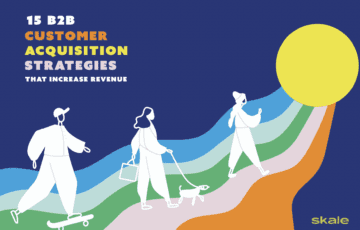
15 B2B Customer Acquisition Strategies that Increase Revenue
Want to find new customers who truly value your business? We’re here to help you out with a list of the top 15 B2B customer acquisition strategies.
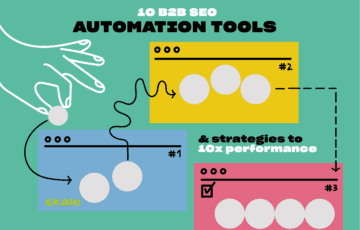
10 B2B SEO Automation Tools & Strategies to 10x Performance in 2024
Save time with the right B2B SEO automation tools and strategies that are sure to bring your marketing to the next level–we've listed them here.